
133
Item nr.
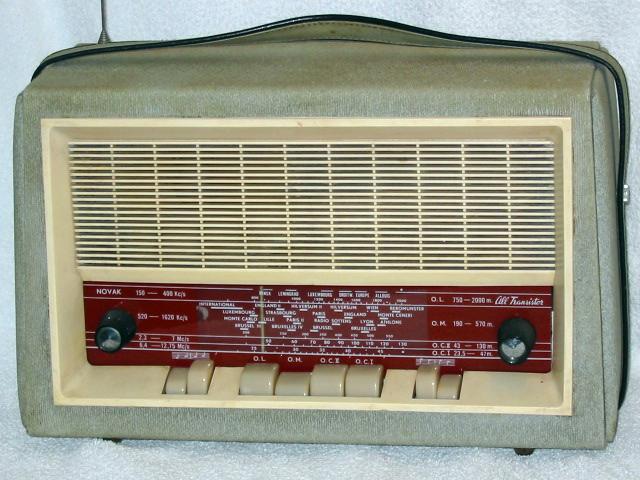
Novak 793 Atlantic
Transistorized Table Top.
Data for Novak 793
| Production | Belgium, 1957.
Price was 3750 BF. |
|---|
| Bands | LW (160-360kHz), MW (610-1435kHz), SW2 (43-130m), SW1 (23-47m); IF is 450kHz. |
|---|
Semi-
conductors | OC170, OA70 (mixer), 2xSFT107 (IF), OA79 (det.), 2xSFT152 (AF), 2xSFT122 (output). |
|---|
| Cabinet | Wood with leatherette.
Size 37x22x17 cm.
Weight 3.8 kg. |
|---|
| Power | Batt 9V (originally 6 D-cells, now one monoblock), 12-60mA. |
|---|
| Documents | Service Doc. |
|---|
The Design
A Summer transistor that you can also use in the Winter...
For many people, transistor is a synonym for portable, but technically spoken this is not true. There are exceptions in both directions. I have various portable tube radios in my collection, and this radio is an example of an (early, but I just guessed how early) radio that uses transistors, but was not intended primarily for portable use. It seems to be the case that in the fifties there were still people who didn't have electricity in their homes and for using radio were dependent on battery sets.
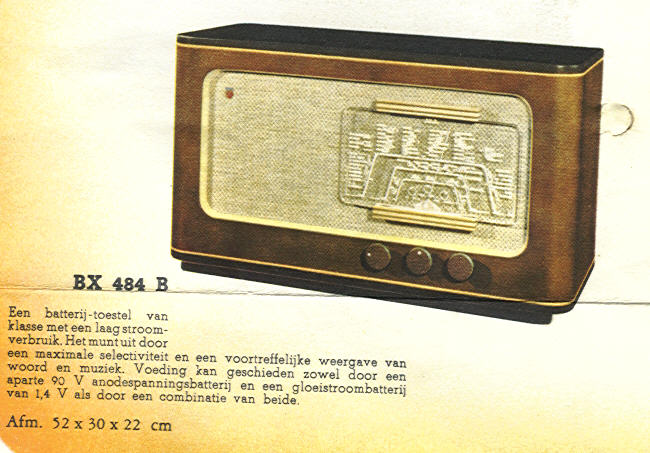 The foto on the left is from a 1950 Philips advertisement flyer and shows the battery set BX484B, a nice wood case that attracted the eye in every chique salon. But listening these radios was so expensive! Even though the little battery tubes employed took only a quarter or so of the power consumption of their 6.3V collegues, still feeding this from batteries was an expensive hobby. Thus, for the deserted places without electricity the invention of the transistor meant saving a lot of money on batteries.
The foto on the left is from a 1950 Philips advertisement flyer and shows the battery set BX484B, a nice wood case that attracted the eye in every chique salon. But listening these radios was so expensive! Even though the little battery tubes employed took only a quarter or so of the power consumption of their 6.3V collegues, still feeding this from batteries was an expensive hobby. Thus, for the deserted places without electricity the invention of the transistor meant saving a lot of money on batteries.
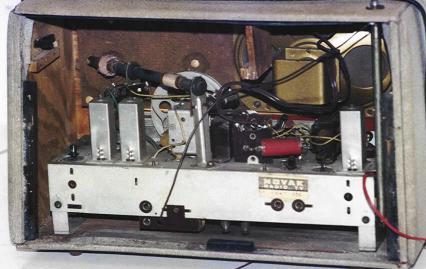
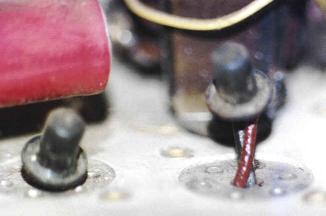 Technically this Novak radio resembles its tubed predecessors a lot. Like the Philips L3X71T, this set has its components mounted on a classical chassis like we know from tube radios.The transistors peep outside from sort of sockets that look like tube sockets, but the leads are soldered. The left shows a chassis overview, in which you can see that near the top of the cabinet there is a battery compartment. The radio has two IF stages (quite common in transistor sets because of the lower gain per stage) and therefore you can see three IF transformers. The radio has a ferrite rod for MW and LW reception, and a whip (visible on the right of the picture) for shortwave. The photo on the right shows the output transistor above its socket.
Technically this Novak radio resembles its tubed predecessors a lot. Like the Philips L3X71T, this set has its components mounted on a classical chassis like we know from tube radios.The transistors peep outside from sort of sockets that look like tube sockets, but the leads are soldered. The left shows a chassis overview, in which you can see that near the top of the cabinet there is a battery compartment. The radio has two IF stages (quite common in transistor sets because of the lower gain per stage) and therefore you can see three IF transformers. The radio has a ferrite rod for MW and LW reception, and a whip (visible on the right of the picture) for shortwave. The photo on the right shows the output transistor above its socket.
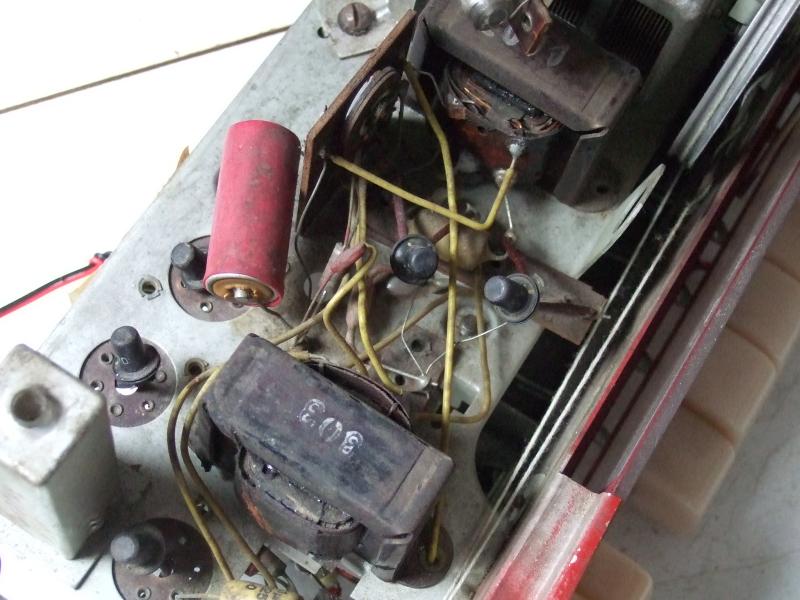
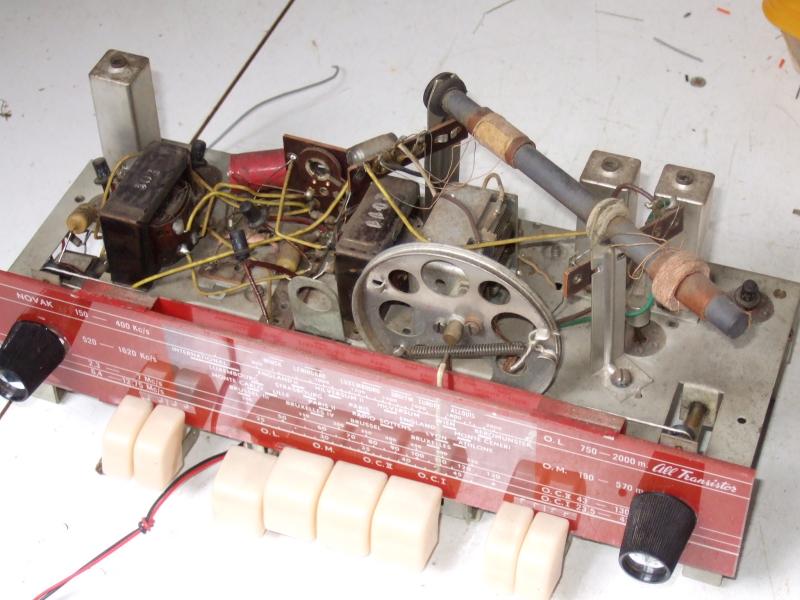 The two output transistors are in a push-pull circuit, and the control voltage for the two transistors is obtained from an audio transformer. If you study the chassis picture carefully you can see that around the output stage there are two transformers.
The two output transistors are in a push-pull circuit, and the control voltage for the two transistors is obtained from an audio transformer. If you study the chassis picture carefully you can see that around the output stage there are two transformers.
| Obtained | 10/1999
from Piet Hoen. |
|---|
| Condition | 6; plays, but cabinet is weak. |
|---|
| Disposed | Sold 10/2016. |
|---|
| Sound sample | PLAY SOUND Music from Belgian station, without a clear start or end. |
|---|
This Object
The radio was part of a lot that was sold by Piet Hoen to Hans Hilberink, but both gentlemen seemed keen to giving the radio to me. Some cleansing revived the radio, the sound is good. Originally, the radio had a holder for six D-cells and a back, as can be seen on photo's at Radiomuseum dot org. But on my set these are gone. Novak type numbers have three digits; there is a serial number 1947-026 on the back. The dial has the code Z2028 printed below the tuning control. 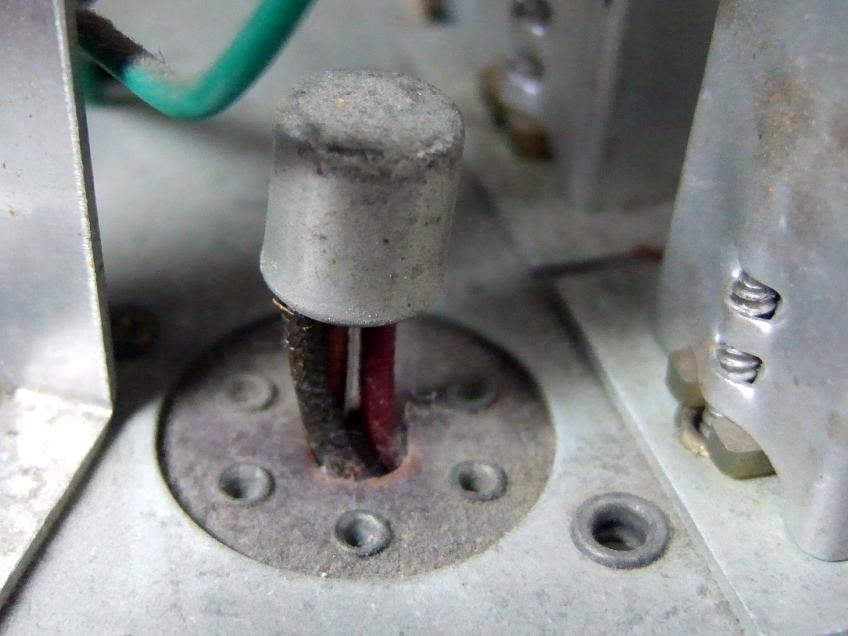
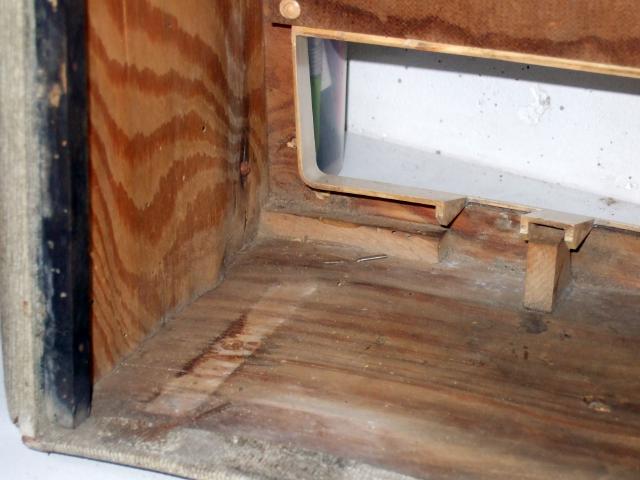 In April 2015 the radio stopped working, and because the RF stage is an OC170 transistor, I feared the transistor had developped whiskers. Fortunately I have some AF139 that can be used as replacement and I dismantled the radio. The OC170 was quickly found, but to my surprise the radio worked fine. Can whiskers be transient? I became a bit worried about the condition of the cabinet, see photo right. It is a triplex construction, but I found the top layer bubbling and without fixation to the deeper layers.
In April 2015 the radio stopped working, and because the RF stage is an OC170 transistor, I feared the transistor had developped whiskers. Fortunately I have some AF139 that can be used as replacement and I dismantled the radio. The OC170 was quickly found, but to my surprise the radio worked fine. Can whiskers be transient? I became a bit worried about the condition of the cabinet, see photo right. It is a triplex construction, but I found the top layer bubbling and without fixation to the deeper layers.
Part of Gerard's Radio Corner.
Generated by SiteBuilder on
26/2/2024
by Gerard
(g.tel@uu.nl)
 The foto on the left is from a 1950 Philips advertisement flyer and shows the battery set BX484B, a nice wood case that attracted the eye in every chique salon. But listening these radios was so expensive! Even though the little battery tubes employed took only a quarter or so of the power consumption of their 6.3V collegues, still feeding this from batteries was an expensive hobby. Thus, for the deserted places without electricity the invention of the transistor meant saving a lot of money on batteries.
The foto on the left is from a 1950 Philips advertisement flyer and shows the battery set BX484B, a nice wood case that attracted the eye in every chique salon. But listening these radios was so expensive! Even though the little battery tubes employed took only a quarter or so of the power consumption of their 6.3V collegues, still feeding this from batteries was an expensive hobby. Thus, for the deserted places without electricity the invention of the transistor meant saving a lot of money on batteries.


 Technically this Novak radio resembles its tubed predecessors a lot. Like the
Technically this Novak radio resembles its tubed predecessors a lot. Like the 
 The two output transistors are in a push-pull circuit, and the control voltage for the two transistors is obtained from an audio transformer. If you study the chassis picture carefully you can see that around the output stage there are two transformers.
The two output transistors are in a push-pull circuit, and the control voltage for the two transistors is obtained from an audio transformer. If you study the chassis picture carefully you can see that around the output stage there are two transformers.

 In April 2015 the radio stopped working, and because the RF stage is an OC170 transistor, I feared the transistor had developped whiskers. Fortunately I have some AF139 that can be used as replacement and I dismantled the radio. The OC170 was quickly found, but to my surprise the radio worked fine. Can whiskers be transient? I became a bit worried about the condition of the cabinet, see photo right. It is a triplex construction, but I found the top layer bubbling and without fixation to the deeper layers.
In April 2015 the radio stopped working, and because the RF stage is an OC170 transistor, I feared the transistor had developped whiskers. Fortunately I have some AF139 that can be used as replacement and I dismantled the radio. The OC170 was quickly found, but to my surprise the radio worked fine. Can whiskers be transient? I became a bit worried about the condition of the cabinet, see photo right. It is a triplex construction, but I found the top layer bubbling and without fixation to the deeper layers.